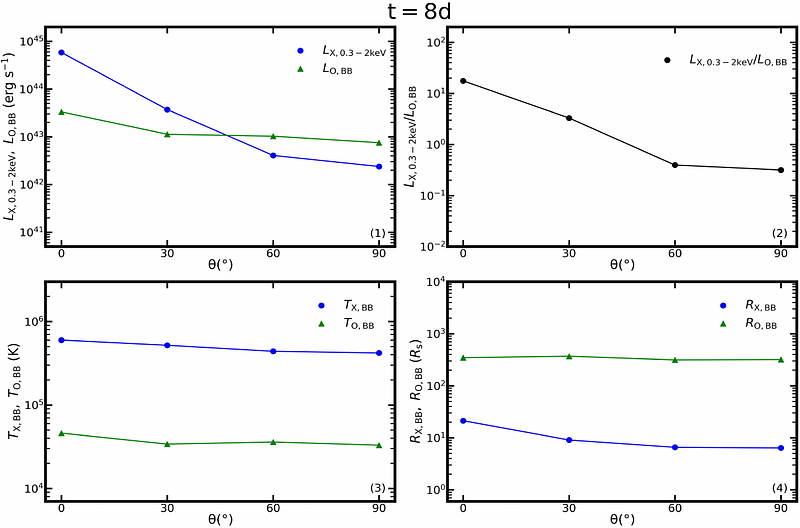Early evolution of super-Eddington accretion flow in tidal disruption events

Early evolution of super-Eddington accretion flow in tidal disruption events
Erlin Qiao, Yongxin Wu, Yiyang Lin, Meng Guo, Jifeng Liu, Chenlei Guo, Chichuan Jin, Ning Jiang
AbstractTidal disruption events (TDEs) are luminous black hole (BH) transient sources, which are detected mainly in X-ray and optical bands. It is generally believed that the X-ray emission in TDEs is produced by an accretion disc formed as the stellar debris accreted onto the central BH. The origin of the optical emission is not determined, but could be explained by the `reprocessing' model with the X-ray emission reprocessed into optical band by a surrounding optically thick envelope or outflow. In this paper, we performed radiation hydrodynamic simulations of super-Eddington accretion flow with Athena++ code in the environment of TDEs, i.e., injecting a continuous mass flow rate at the circularization radius in the form of $\dot M_{\rm inject} \propto t^{-5/3}$ for the mass supply rate. We show that a significant fraction of the matter in the accretion inflow are blowed off forming outflow, and the properties of the outflow are viewing-angle dependent. We further calculate the emergent spectra of such an inflow/outflow system for different viewing angles with the method of Monto Carlo radiative transfer. Based on the emergent spectra, we show that the observed features of TDEs, such as the X-ray and optical luminosities, the blackbody temperature of X-ray and optical emission and the corresponding emission radii, the ratio of X-ray luminosity to optical luminosity, as well as the evolution of these quantities can be explained in the framework of viewing-angle effect of super-Eddington accretion around a BH.